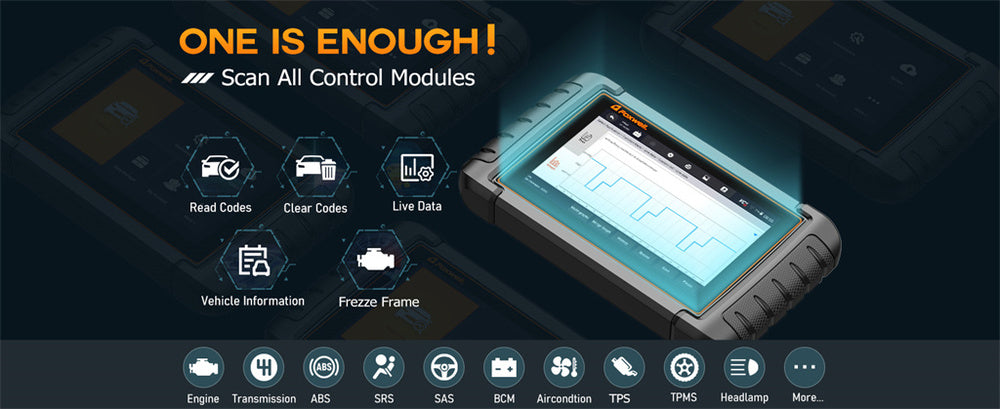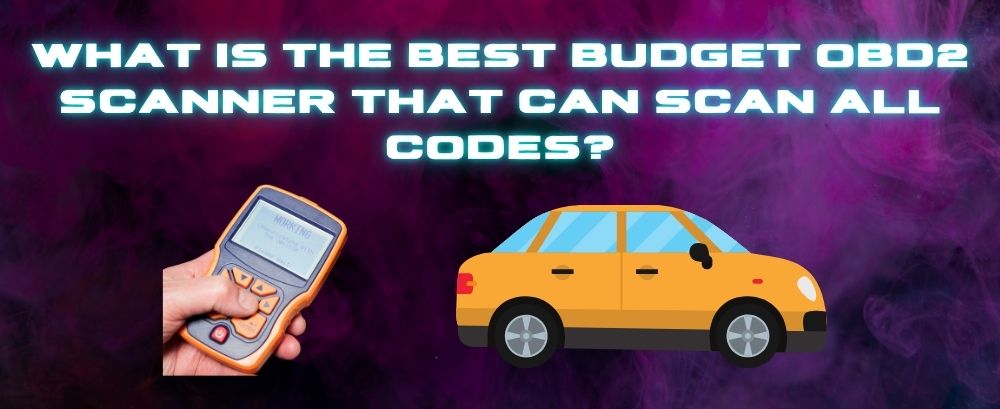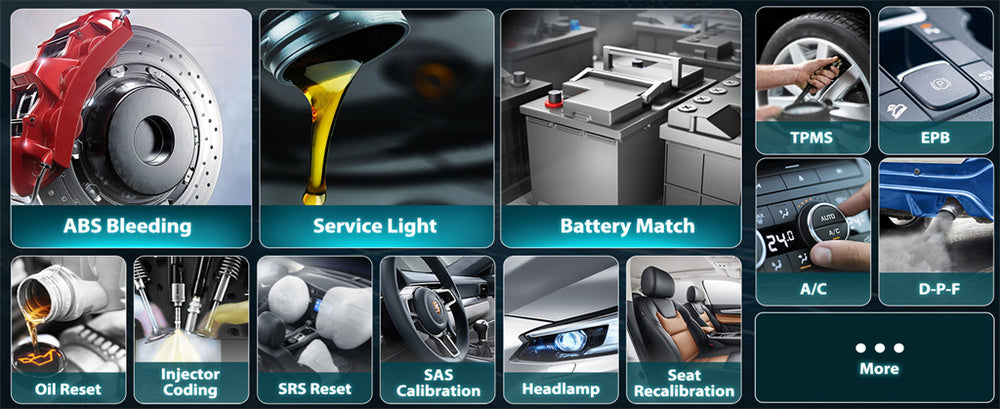A check engine light often leaves us feeling confused: is it something minor, or will significant repairs need to be undertaken?
Scan tools offer a quick and effective solution, helping car enthusiasts and professional mechanics quickly identify vehicle issues by connecting directly to its electronic systems and providing insight into any underlying issues - potentially saving time and money on repairs.
What Is ECU Scanning and How Does It Work?

When your car throws an error code, the dashboard light alerting you of something going amiss often follows suit.
But where exactly lies the issue? ECU scanning tools provide insights into what may be going wrong by reading error codes from your ECU (Electronic Control Unit). While these codes cannot offer definitive solutions, they point to proper diagnosis.
ECU scanning connects to your car's OBD-II port - something every modern vehicle has. Once plugged in, this tool connects directly with its ECU to retrieve diagnostic trouble codes (DTCs) that indicate specific problems such as sensors failing, engine misfires, or emissions problems.
ECU scanning makes diagnosis simple - no expert mechanic is necessary to use this powerful tool; even novice mechanics can benefit significantly from its insights! It also allows repairs required to be completed based on guesswork alone!
Why Is ECU Scanning Essential to Vehicle Diagnosis?
ECU scanning is essential because it enables accurate and efficient diagnosis of an automobile's electronic systems. Without ECU scanning, mechanics may resort to guesswork, wasting unnecessary time and replacing part purchases.
Modern vehicles use electronic systems to manage everything from engine performance to safety features, with scanning tools providing direct communication with these systems and quickly identifying faults in them.
ECU scanning helps prevent costly repairs, improve safety, and ensure systems such as fuel efficiency and emissions control operate optimally.
Prioritized Features to Consider in an ECU Scanning Tool
When purchasing an ECU scanning tool, ensure its features match your requirements. Which features should take precedence?
- Vehicle Compatibility: Only some tools work with all cars. If you work on multiple vehicles at once for optimal performance, look for scanners compatible with various car makes and models.
- Real-Time Data: Live data streaming lets you stay abreast of everything happening with your car in real time, from fuel usage to engine performance, providing in-depth analyses.
- User Interface: Navigability is of utmost importance; otherwise, you could spend too much time navigating complex menus or interpreting cryptic codes without an easily understandable display.
- Future Proofed Scanner: Your scanner should be designed to accommodate software updates as new vehicle models and diagnostic protocols become available.
- Bi-Directional Control: Advanced scan tools offer bi-directional control of specific systems or parts of your car, such as testing components in real-time or forcing systems to reset. This feature is indispensable for professionals or advanced DIYers.
Step-by-Step Guide: How to Use ECU Scanning in a Scan Tool
Let's explain how ECU scanning with the Foxwell NT909 can help diagnose your car. I will use that device as an example.
- Once it's installed: To connect, find the OBD-II port in your vehicle (usually under the dashboard) and plug the NT909's wireless Bluetooth dongle into it.
- Switch the Ignition: To turn on the ignition, place your key into the "on" position without starting up your engine and switch it on - this powers up the ECU and fuels its operation.
- Auto-detect your Vehicle: With its VIN reading functionality, the NT909 can quickly identify and recognize your car. This makes the process simpler.
- Conduct a Full System Scan: From the user-friendly touchscreen menu, select which system(s) to scan - such as engine, airbags, or ABS - before selecting "scan." The NT909 will read error codes and explain any discrepancies it finds.
- Analyze Your Data: Once the scan is completed, you'll have a list of fault codes with descriptions. Plus, with NT909, you'll get additional help with possible solutions and fixes - saving you hours from surfing endless web search pages for answers!
Once the issue has been addressed, use this tool to clear codes and turn off that pesky "check engine" light.
Advanced diagnostics: The Foxwell NT909 features bidirectional control for more accurate diagnoses. You can test components like fuel pumps or cooling fans to see if they're functioning as expected, providing for more precise diagnoses.
ECU Scanning Can Identify Subtle Vehicle Issues
ECU scanning identifies numerous vehicle problems that might not be immediately evident, such as oxygen sensor failure affecting fuel economy and emissions.
One such issue it addresses is oxygen sensor replacement, which immediately affects both economies and emissions.
Transmission problems that begin as minor but quickly progress into major failures can often be detected early with a scan.
Scanning tools can also detect emissions system problems, such as a failing catalytic converter or issues with an anti-lock braking system (ABS), helping drivers identify risks and save on repairs in the future.
Here Are Key Considerations When Selecting ECU Scanning Scan Tools:
An ECU scanning tool is a significant investment, so make sure that you purchase the one best suited to you by considering:
- Budget: While professional-grade tools may cost more, several mid-range models provide adequate functionality without busting your budget.
- Ease of Use: Users at all skill levels require a scanner with an intuitive display and user-friendly navigation. A clear display and easy operation are essential.
- Data Accuracy: Higher-end tools offer more accurate and comprehensive diagnostics, so if vehicle maintenance is essential to you, accuracy matters.
- Software Updates: As vehicles advance, so must their diagnostic systems. Ensure your tool offers regular software updates to stay compatible with future vehicles.

Conclusion
With today's tech-driven vehicles, ECU scanning is no longer just a luxury; it has become essential to maintaining car performance.
From professional mechanics to everyday drivers alike, having access to an advanced scan tool like the Foxwell NT909 makes a world of difference when diagnosing issues quickly or saving both time and money, empowering drivers like you with control of their vehicle health, making life simpler for themselves while improving vehicle performance.
FAQs
Do I need ECU programming?
ECU programming is necessary if you're replacing or updating an ECU, or if you want to modify vehicle performance settings. Most car owners won’t need this unless they’re doing major repairs or performance tuning.
What is ECU coding on a scan tool?
ECU coding involves configuring or reprogramming the software in the ECU to optimize or restore specific settings. This can affect things like throttle response, fuel efficiency, or other performance metrics.
What is the programming function on a scan tool used for?
The programming function allows you to update or reflash the ECU's software. It's typically used when replacing the ECU or upgrading vehicle systems.




Leave a comment
This site is protected by hCaptcha and the hCaptcha Privacy Policy and Terms of Service apply.